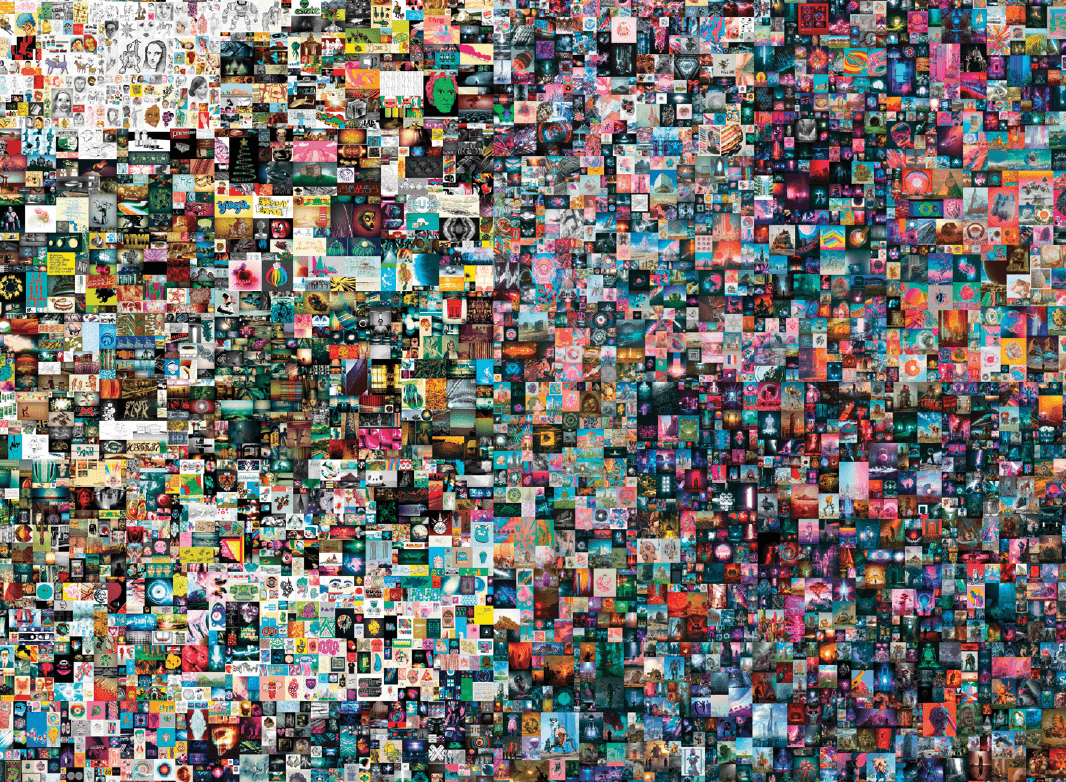By: DIRK DESOUZA

Mind boggling non-fungible tokens are the convergence of passion for culture aficionados and crypto enthusiasts.
As the Christie’s virtual gavel dropped in London in June, real life gasps drifted into diodes across the stratosphere as the final bid flashed. The winning number was an astounding $69 million for an original Beeple, née Mike Winkelmann, the American artist who’d spent 13 years weaving 5,000 daily digital photos of his artsy life into a vast, one-of-a-kind novel collage. The auction victor received the entirely digital Everydays: the First 5000 Days as an NFT (non-fungible token), an impenetrable golden ticket sitting within the Ethereum blockchain. The work is only accessible via private key comprised of 64 random hexadecimal characters. What is Ethereum? A cryptocurrency. What is the blockchain? A publicly transparent, unhackable network of computers scattered across continents controlled by everyone and no one. A new medium has arrived — artwork of an unmistakable creator and ownership provenance that is uncopiable. Goodbye Pollocks’ drips, hello Beeple’s bits. Cue the wonderment; cue the confusion.
Ever the capitalists, Miami’s art world is downing this newfound non-fungible digital elixir like magnums of Ruinart. SCOPE, the contemporary Miami Art Week mainstay now celebrating its 20th anniversary, collaborated with digital marketplace YellowHeart to create an ultra-limited series of NFT-minted VIP tickets embedded with exclusive digital artwork inside. The Institute of Contemporary Art’s July acquisition of Larva Labs’ teeny 24×24 pixel NFT, CryptoPunk 5293, marked the first blockchain artwork to enter a major art museum collection worldwide. Gallerist Marc Billings of Blackdove launched an NFT art commerce platform, beaming hundreds of works by dozens of international artists onto ultra 98″ 4K “digital canvases” mounted in collectors’ homes.
The 2021 gold rush of NFTs has seismically shaken the creative world. Elon Musk’s baby mama, musician Grimes, crafted a limited series of 10 fantastical NFT videos coupled with original music that sold for $6 million. Actress Mila Kunis and husband Ashton Kutcher created the animated web comedy series, Stoner Cats, exclusively for 10,000 Stoner Cats NFT holders who each paid $800. The inventor of the world wide web, English scientist Tim Berners-Lee, netted $5.4 million for an NFT of his original 9,555 lines of internet source code written in 1990.
Experts note that NFTs help shift power back to the artists. As the value of digital merch and memorabilia skyrockets, NFT ticketing decimates scalpers, and musicians get paid handsomely for their works. Beyond the promising financials and a fringy appeal of this unit of stored data, to many there is an empirical meaning that defines this revolutionary representation of digital files.
“The symbolism, the history, the fact that they’re coming from the creator is what makes NFTs valuable,” says Cassandra Hatton, global head of popular culture at Sotheby’s, the leader in NFTs auctions. “There are lots of people who collect things for exactly those reasons.”
